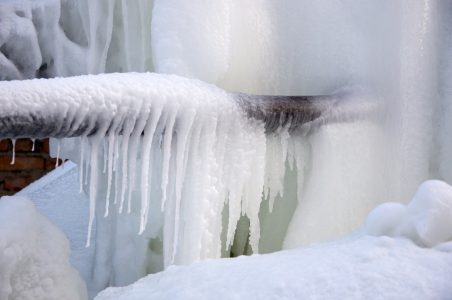Ways to Protect Your Pipes from Cold Weather: Professional Tips
Ways to Protect Your Pipes from Cold Weather: Professional Tips
Blog Article
In this article below you'll find some good quality content on the subject of Preventing and dealing with frozen pipes.

Winter can ruin your pipes, especially by freezing pipes. Below's exactly how to avoid it from happening and what to do if it does.
Intro
As temperatures drop, the threat of frozen pipelines boosts, potentially bring about expensive repair work and water damage. Understanding just how to avoid icy pipes is crucial for property owners in chilly climates.
Avoidance Tips
Shielding prone pipelines
Wrap pipelines in insulation sleeves or utilize warm tape to shield them from freezing temperatures. Concentrate on pipelines in unheated or exterior areas of the home.
Home heating techniques
Keep interior rooms properly heated, particularly areas with plumbing. Open up cabinet doors to allow cozy air to circulate around pipes under sinks.
How to determine frozen pipelines
Try to find lowered water circulation from taps, unusual odors or noises from pipes, and noticeable frost on revealed pipelines.
Long-Term Solutions
Architectural modifications
Think about rerouting pipes away from outside wall surfaces or unheated areas. Add added insulation to attic rooms, basements, and crawl spaces.
Upgrading insulation
Buy top notch insulation for pipes, attics, and wall surfaces. Correct insulation assists keep consistent temperature levels and reduces the danger of icy pipes.
Securing Outside Pipes
Yard tubes and exterior faucets
Separate and drain garden pipes before wintertime. Install frost-proof spigots or cover exterior taps with insulated caps.
Comprehending Frozen Pipelines
What triggers pipes to ice up?
Pipelines freeze when subjected to temperatures listed below 32 ° F (0 ° C) for prolonged periods. As water inside the pipes ices up, it increases, taxing the pipe wall surfaces and possibly creating them to burst.
Threats and damages
Icy pipes can lead to water interruptions, property damage, and pricey fixings. Ruptured pipelines can flood homes and cause substantial structural damages.
Indications of Frozen Pipes
Determining frozen pipelines early can stop them from breaking.
What to Do If Your Pipes Freeze
Immediate actions to take
If you suspect frozen pipes, maintain taps open up to relieve stress as the ice thaws. Make use of a hairdryer or towels taken in hot water to thaw pipes slowly.
Conclusion
Preventing frozen pipes requires proactive actions and quick reactions. By understanding the reasons, signs, and safety nets, homeowners can protect their pipes during cold weather.
5 Ways to Prevent Frozen Pipes
Drain Outdoor Faucets and Disconnect Hoses
First, close the shut-off valve that controls the flow of water in the pipe to your outdoor faucet. Then, head outside to disconnect and drain your hose and open the outdoor faucet to allow the water to completely drain out of the line. Turn off the faucet when done. Finally, head back to the shut-off valve and drain the remaining water inside the pipe into a bucket or container. Additionally, if you have a home irrigation system, you should consider hiring an expert to clear the system of water each year.
Insulate Pipes
One of the best and most cost-effective methods for preventing frozen water pipes is to wrap your pipes with insulation. This is especially important for areas in your home that aren’t exposed to heat, such as an attic. We suggest using foam sleeves, which can typically be found at your local hardware store.
Keep Heat Running at 65
Your pipes are located inside your walls, and the temperature there is much colder than the rest of the house. To prevent your pipes from freezing, The Insurance Information Institute suggests that you keep your home heated to at least 65 degrees, even when traveling. You may want to invest in smart devices that can keep an eye on the temperature in your home while you’re away.
Leave Water Dripping
Moving water — even a small trickle — can prevent ice from forming inside your pipes. When freezing temps are imminent, start a drip of water from all faucets that serve exposed pipes. Leaving a few faucets running will also help relieve pressure inside the pipes and help prevent a rupture if the water inside freezes.
Open Cupboard Doors
Warm your kitchen and bathroom pipes by opening cupboards and vanities. You should also leave your interior doors ajar to help warm air circulate evenly throughout your home.

We were brought to that write-up on 6 Ways to Prevent Frozen Pipes through an acquaintance on a different domain. In case you appreciated our article plz be sure to pass it around. Thanks a lot for being here. Come back soon.
Click Here Report this page